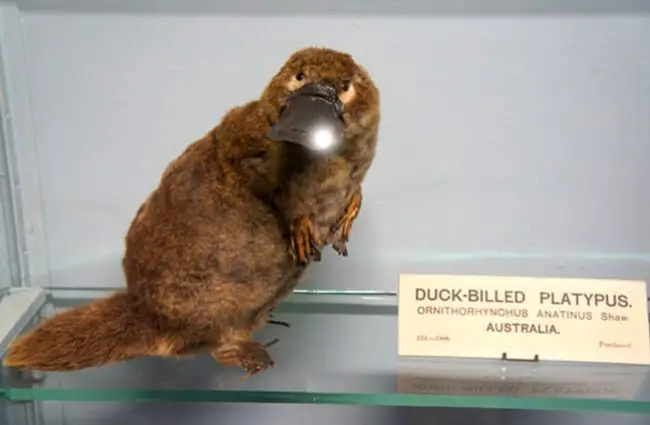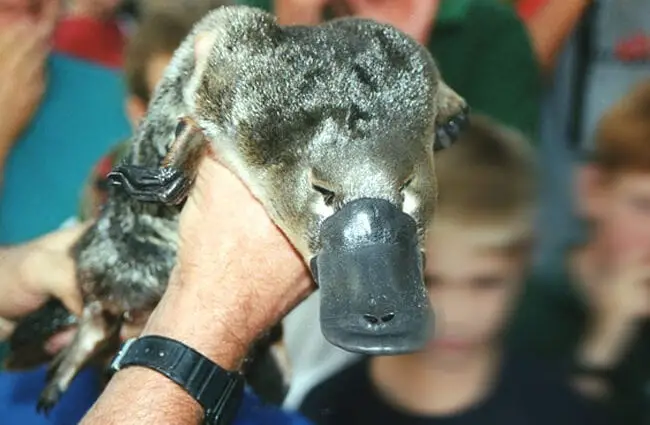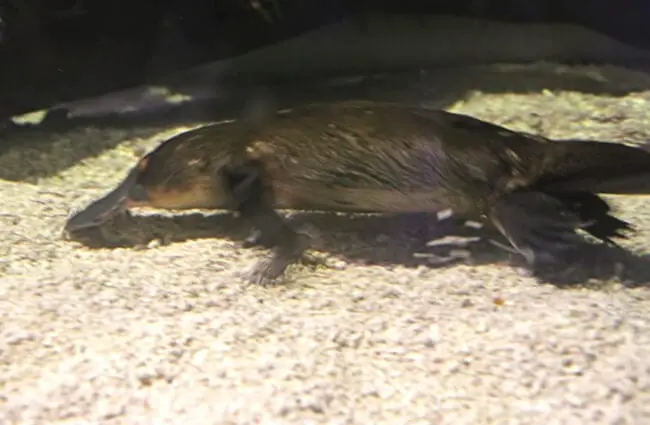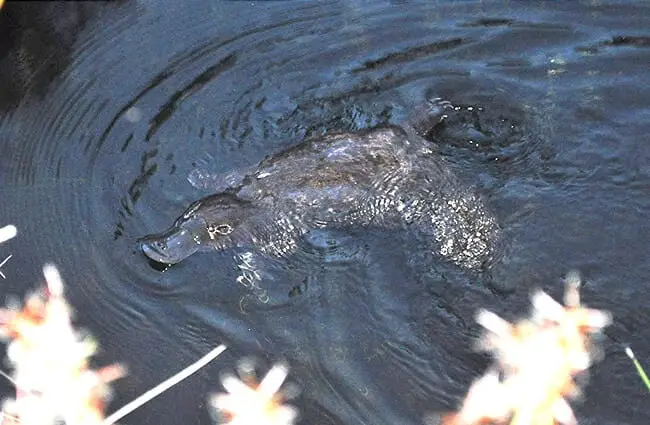Unveiling the Platypus: Australia’s Enigmatic Marvel
Imagine a creature that seems to defy all biological conventions, a living mosaic stitched together from parts of a duck, a beaver, and an otter. This is the platypus, Ornithorhynchus anatinus, one of nature’s most extraordinary masterpieces. From its peculiar appearance to its astonishing adaptations, the platypus has captivated scientists and enthusiasts alike since its discovery. This article delves into the fascinating world of this semi-aquatic mammal, exploring its unique biology, ecological role, and the vital efforts to ensure its survival.

A Creature of Contradictions: Basic Facts
The platypus stands as a testament to evolutionary ingenuity, belonging to a unique group of mammals known as monotremes. These are the only mammals that lay eggs, a trait shared only with their close relatives, the echidnas. When the first platypus specimen arrived in Europe in the late 18th century, scientists were so bewildered they suspected it was a hoax, a taxidermist’s elaborate prank.
- Classification: The platypus is a monotreme, an order of mammals that lay eggs instead of giving birth to live young.
- Appearance: Its most striking feature is its rubbery, duck-like bill. It possesses webbed feet, a broad, flattened tail resembling a beaver’s, and a sleek, otter-like body covered in dense, waterproof fur.
- Size and Weight: Adults typically measure between 30 to 45 centimeters (12 to 18 inches) from head to tail, weighing between 0.7 to 2.4 kilograms (1.5 to 5.3 pounds). Males are generally larger than females.
- Lifespan: In the wild, platypuses can live for over 10 years, with some individuals reaching up to 20 years in captivity.
Where the Wild Things Are: Habitat and Distribution
The platypus is endemic to eastern Australia and Tasmania, thriving in freshwater environments. Its preferred habitat includes slow-moving rivers, streams, and lakes with abundant invertebrate life and stable banks suitable for burrowing.
- Geographic Range: Found along the eastern coast of Australia, from northern Queensland down through New South Wales and Victoria, and across the island of Tasmania.
- Preferred Environment: They inhabit a variety of freshwater systems, including rivers, creeks, and even farm dams, provided there is sufficient food, clean water, and stable banks for their burrows.
- Burrowing Habits: Platypuses are expert excavators. They dig extensive burrows, known as ‘platypusaries’, into riverbanks. These burrows can be several meters long, with multiple chambers and entrances, some above and some below the waterline. These serve as safe havens for resting, nesting, and raising their young.

The Gourmet of the Riverbed: Diet and Hunting Strategies
As carnivores, platypuses have a specialized diet consisting primarily of aquatic invertebrates. Their unique bill is not just for show; it is a highly sensitive sensory organ crucial for hunting.
- Carnivorous Diet: Their menu includes insect larvae, freshwater shrimp, yabbies (freshwater crayfish), worms, and other small aquatic creatures.
- Electrolocation Explained: One of the platypus’s most astonishing adaptations is its ability to detect electrical impulses generated by the muscle contractions of its prey. While foraging underwater, the platypus closes its eyes, ears, and nostrils, relying entirely on its electroreceptive bill. The bill contains thousands of electroreceptors and mechanoreceptors, allowing it to navigate and pinpoint prey even in murky waters or complete darkness.
- Foraging Behavior: Platypuses spend a significant portion of their time underwater, typically diving for 30 to 60 seconds at a time. They scoop up prey along with gravel and mud into cheek pouches, which they then process and consume at the surface.
Life’s Journey: Reproduction and Development
The reproductive cycle of the platypus is one of its most fascinating aspects, highlighting its ancient lineage as an egg-laying mammal.
- Monotreme Reproduction: Unlike placental mammals or marsupials, the female platypus lays eggs. Mating typically occurs between June and October.
- Courtship: Courtship involves an elaborate aquatic dance, with the male often grasping the female’s tail and swimming in circles.
- Nesting Burrow: After mating, the female constructs a special, often more elaborate, ‘nursery burrow’ that can be up to 20 meters long. She seals off sections with soil plugs to protect her eggs and young from predators and floods.
- Incubation and Hatching: She typically lays one to three leathery eggs, which she incubates by curling around them in her burrow for about 10 days. The tiny, vulnerable young, known as ‘puggles’, hatch blind and hairless.
- Lactation: Monotremes lack nipples. Instead, the mother secretes milk through specialized pores on her abdomen, which the puggles lap up from grooves in her fur.
- Puggle Development: Puggles remain in the burrow, dependent on their mother’s milk, for three to four months before emerging as fully furred, miniature versions of their parents.

An Evolutionary Masterpiece: Unique Adaptations
The platypus is a living testament to millions of years of evolution, boasting a suite of adaptations that allow it to thrive in its unique niche.
- Electrolocation: As mentioned, this sixth sense is unparalleled among mammals, allowing it to hunt effectively in environments where sight is useless. The bill’s receptors detect minute electrical fields, guiding the platypus to its next meal.
- Venom: Male platypuses possess a venomous spur on each hind ankle. This venom, primarily used during breeding season to assert dominance over other males, is potent enough to cause severe pain in humans and can be lethal to smaller animals. It is a rare example of a venomous mammal.
- Semi-Aquatic Lifestyle: Its dense, waterproof fur provides insulation in cold water. The webbed front feet are powerful paddles for swimming, and can retract the webbing to expose claws for digging burrows on land. Its streamlined body minimizes drag underwater.
- Thermoregulation: Despite living in cold water, the platypus maintains a relatively low but stable body temperature, around 32 degrees Celsius (90 degrees Fahrenheit), which is lower than most mammals but higher than most reptiles. Its thick fur and ability to regulate blood flow help it conserve heat.
- Dental Structure: Adult platypuses do not have teeth. Instead, they possess hardened, keratinous grinding pads in their mouths, which they use to crush the exoskeletons of their invertebrate prey.
Platypus in the Ecosystem: Role and Interactions
As a predator of aquatic invertebrates, the platypus plays a crucial role in maintaining the health of freshwater ecosystems.
- Predator Role: By consuming insect larvae and crustaceans, platypuses help regulate populations of these organisms, which can in turn influence algal growth and water quality.
- Prey Animals: While adults are relatively safe due to their elusive nature and the male’s venom, young puggles and smaller adults can fall prey to native predators such as large birds of prey, snakes, and goannas. Introduced predators like foxes and feral cats also pose a threat.
- Impact on Riverbeds: Their extensive burrowing activities can contribute to bank stability and aeration of the soil, influencing the physical structure of riverine habitats.

A Symbol of the Wild: Platypus in Human Culture
The platypus holds a special place in Australian culture and has long fascinated the global scientific community.
- Cultural Significance: It is an iconic Australian animal, often featured in folklore, art, and as a national symbol. Its unique qualities embody the distinctiveness of Australian wildlife.
- Scientific Curiosity: Its status as a monotreme has made it a subject of intense scientific study, offering invaluable insights into mammalian evolution and the transition from reptilian to mammalian traits.
Conservation Concerns: Protecting a National Treasure
Despite its iconic status, the platypus faces significant threats, leading to concerns about its long-term survival.
- Threats:
- Habitat Loss and Degradation: Urban development, agriculture, and land clearing lead to the destruction and fragmentation of their riverine habitats.
- Water Pollution: Runoff from farms and urban areas introduces pesticides, chemicals, and sediment into waterways, impacting water quality and prey availability.
- Climate Change: Droughts and extreme weather events reduce water levels and flow, directly affecting platypus populations and their food sources.
- Fishing Nets and Traps: Platypuses can drown in unattended fishing nets, yabby traps, and other aquatic debris.
- Introduced Predators: Foxes and feral cats can prey on platypuses, especially when they are on land or in shallower waters.
- Conservation Status: The platypus is currently listed as “Near Threatened” by the IUCN, but some regional populations are considered endangered or vulnerable, particularly in areas affected by severe drought and habitat degradation.
- Conservation Efforts: Initiatives include habitat restoration, pollution control, community education, and the removal of harmful fishing gear. Monitoring programs help track population trends and identify areas requiring urgent intervention.

Encountering the Platypus: Practical Insights
Spotting a Platypus in the Wild: Tips for Enthusiasts
For animal lovers hoping to catch a glimpse of this elusive creature, patience and a keen eye are essential.
- Best Times: Platypuses are primarily crepuscular and nocturnal, meaning they are most active during dawn and dusk. These are the best times to spot them.
- Locations: Look for them in quiet, clear freshwater rivers, streams, and billabongs, particularly those with stable banks and overhanging vegetation. Areas with minimal human disturbance are ideal.
- Signs to Look For: Keep an eye out for ripples on the water’s surface, often created by their diving and surfacing. A chain of small bubbles might indicate a platypus foraging underwater. They often surface briefly to chew their food before diving again.
- Patience is Key: Platypuses are shy and blend well with their environment. Find a quiet spot, remain still, and observe patiently. Binoculars can be very helpful.
What to Do if You See a Platypus: Hiker’s Guide
Encountering a platypus in its natural habitat is a rare and special experience. It is crucial to prioritize the animal’s well-being and your safety.
- Observe from a Distance: Maintain a respectful distance. Use binoculars if you wish to get a closer look.
- Do Not Approach or Touch: Never attempt to approach, touch, or feed a platypus. Human interaction can cause stress to the animal and alter its natural behavior.
- Respect Their Space: Avoid making loud noises or sudden movements that could startle the platypus. Allow it to go about its natural activities undisturbed.
- Awareness of Male Venom: Remember that male platypuses possess venomous spurs. While attacks on humans are rare, a jab from a spur can cause excruciating pain and swelling. If you encounter a platypus on land, give it a wide berth.
Caring for Platypuses in Captivity: A Zookeeper’s Perspective
Caring for platypuses in a zoological setting is a highly specialized and demanding task, requiring meticulous attention to their unique needs.
- Enclosure Requirements:
- Large Aquatic Area: A significant, clean freshwater pool with specific temperature and flow rates is essential to mimic their natural riverine habitat.
- Complex Burrow System: Replicating their intricate burrows with both aquatic and terrestrial entrances, multiple chambers, and nesting areas is vital for their physical and psychological well-being.
- Specific Water Quality: Maintaining pristine water quality, including appropriate pH, oxygen levels, and filtration, is paramount to prevent skin infections and other health issues.
- Dietary Needs:
- Live Invertebrates: A captive diet must closely match their natural intake, consisting of a variety of live aquatic invertebrates such as freshwater shrimp, yabbies, and worms.
- Specialized Feeding Techniques: Food is often scattered in the water or hidden to encourage natural foraging behaviors, stimulating their electroreception.
- Behavioral Enrichment:
- Simulating Natural Foraging: Providing opportunities for digging, exploring, and hunting for food helps prevent boredom and promotes natural behaviors.
- Hiding Food: Placing food items in various locations within the aquatic and terrestrial parts of the enclosure encourages active searching.
- Health Monitoring:
- Regular Checks: Daily observations for changes in behavior, appetite, or physical condition are crucial. Regular veterinary check-ups, often requiring specialized handling techniques, are also necessary.
- Stress Reduction: Minimizing noise, providing ample hiding spots, and maintaining a consistent routine are important to reduce stress in these naturally shy animals.
- Things to Avoid:
- Loud Noises, Sudden Movements: Platypuses are highly sensitive to disturbances.
- Improper Water Conditions: Poor water quality can quickly lead to health problems.
- Inadequate Diet: A lack of variety or live prey can lead to nutritional deficiencies.
- Unnecessary Handling: Handling should be minimized and only performed by trained professionals when absolutely necessary, due to their delicate nature and the male’s venomous spurs.
Fascinating Platypus Facts: A Quick Dive
- The common name “duck-billed platypus” is technically redundant, as “platypus” already refers to its flat foot, and its bill is its most defining feature.
- When diving, a platypus closes its eyes, ears, and nostrils, relying entirely on its electroreceptive bill to navigate and hunt.
- Their dense fur traps a layer of air, providing excellent insulation and buoyancy, allowing them to stay warm in cold water.
- Platypuses have a unique, sprawling gait on land, which is less efficient than their powerful swimming.
- They can spend up to 12 hours a day foraging for food.
- The platypus genome has been sequenced, revealing insights into its unique evolutionary position and the origins of mammalian traits.
Conclusion: The Enduring Mystery
The platypus remains one of the planet’s most captivating and enigmatic creatures. Its blend of reptilian and mammalian characteristics, coupled with its extraordinary adaptations like electrolocation and venom, makes it a living relic and a marvel of biodiversity. As we continue to unravel the mysteries of this unique Australian icon, our understanding of evolution deepens. However, with this knowledge comes the profound responsibility to protect its fragile freshwater habitats. By appreciating its uniqueness and supporting conservation efforts, we can ensure that the platypus continues to swim, forage, and inspire wonder for generations to come, a true testament to nature’s boundless creativity.

![Red Angus Closeup of a beautiful Red Angus cowPhoto by: U.S. Department of Agriculture [pubic domain]https://creativecommons.org/licenses/by/2.0/](https://animals.net/wp-content/uploads/2020/03/Red-Angus-4-238x178.jpg)




![Red Angus Closeup of a beautiful Red Angus cowPhoto by: U.S. Department of Agriculture [pubic domain]https://creativecommons.org/licenses/by/2.0/](https://animals.net/wp-content/uploads/2020/03/Red-Angus-4-100x75.jpg)

